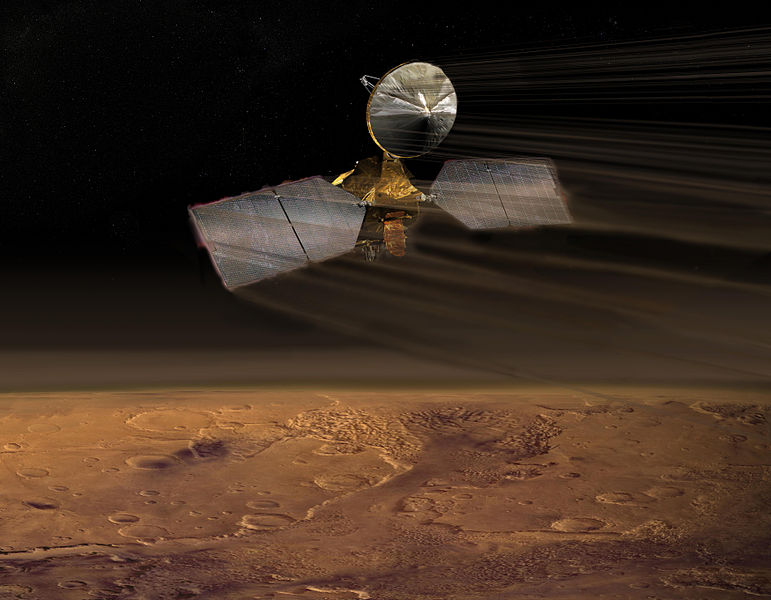Spaceflight Experience
I started my professional career as an aerospace engineer, and I gained spaceflight experience starting at Stanford when I was working on my Masters degree. I have been lucky enough to work on a number of great projects despite a very short career as purely an engineer. Now as a planetary scientist, I continue to work to be involved in planetary missions.
In four years working at JPL I experienced the entire flight project development cycle, from preliminary design to launch. I worked on advanced concept design, technology development, instrument design, science operations, and instrument/payload system engineering, as a junior member on large teams as well as leader on small teams. My projects included: Pluto Kuiper Express, Europa Orbiter, Solar Probe, Mars Reconnaissance Orbiter (MRO), Deep Impact, MARVEL (a Mars Scout proposal), and the Terrestrial Planet Finder Coronagraph. The majority of my time was spent working as a payload system engineer on MRO, a science operations engineer on Deep Impact, and the instrument engineer for the occultation spectrometer on the MARVEL Scout proposal.
Mars Reconnaissance Orbiter (MRO)

The Mars Reconnaissance Orbiter continues to provide unprecedented spatial and spectral observations of the Martian surface and atmosphere. As a payload engineer, I was an interface between the instrument teams and the spacecraft team through the early phases of the mission development (Phase A through C, in JPL lingo). I specifically worked with the instrument teams responsible for the Context Camera Experiment (CTX), the Mars Climate Imager (MARCI), and the Mars Climate Sounder (MCS).
Deep Impact

I was lucky to be invited to work on the Deep Impact science team as a science system engineer. Working with one of the Deep Impact co-Investigators, Ken Klaasen, I was responsible for developing the lunar calibration observations as well as the training for science operations during flight. Both graduate school and personal events kept me from participating in the encounter, but when the Deep Impact impactor vehicle struck the Temple-1 comet, I was awake in the middle of the night savoring the images from this innovative mission.
Orbiting Picosatellite Automatic Launcher (OPAL_

My first flight mission, however, was the OPAL spacecraft, which was designed and built at Stanford by students in the Space Systems Development Laboratory (SSDL). SSDL at the time was run by Professor Bob Twiggs. Twiggs envisioned that Masters students at Stanford would design and build a spacecraft over the course of three quarters as part of his space system engineering class. OPAL was one of the first attempts to do that. The Orbiting Picosatellite Automated Launcher (OPAL) was a student designed and built spacecraft that would launch even smaller satellites into orbit, i.e. the ‘picosatellites’. The picosatellites were supplied by Santa Clara University and the Aerospace Corporation. When I attended Stanford, OPAL was in the final phases of assembly and test. I got involved in testing the launcher mechanism as well as the complete satellite. Eventually launch in January 2000, OPAL was a successful spacecraft but a failed teaching experiment.
Whereas Twiggs wanted a satellite built in nine months, OPAL took multiple years to be designed and built, thus failing to give a complete spacecraft experience to a single year of Masters students. Twiggs saw that even a small satellite like OPAL was too large and ambitious for a three quarter class. This insight would lead Twiggs and colleagues to develop the cubesat standard, which in its simplest format provides a platform for designing and building a fully functional spacecraft in one academic year. I essentially was a guinea pig in the crucible of the cubesat revolution.